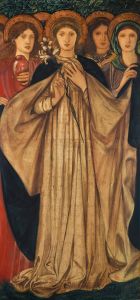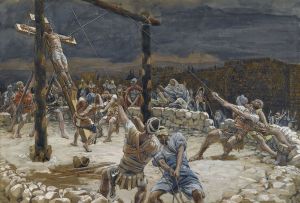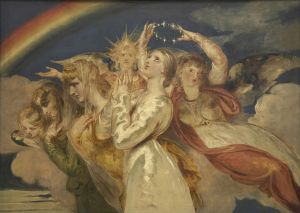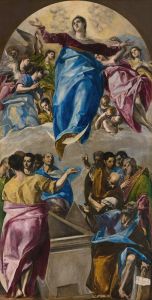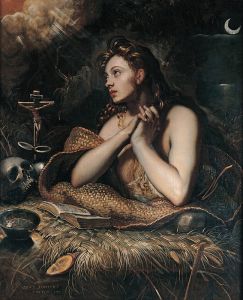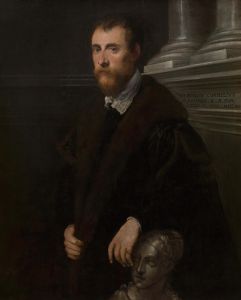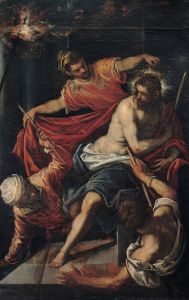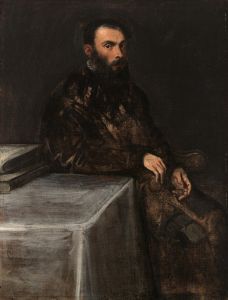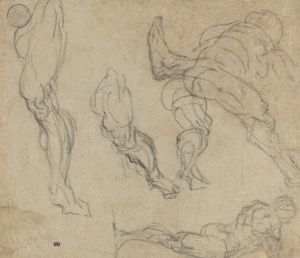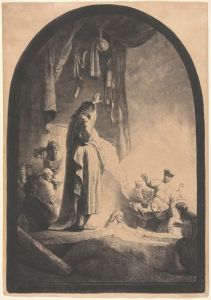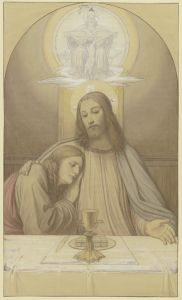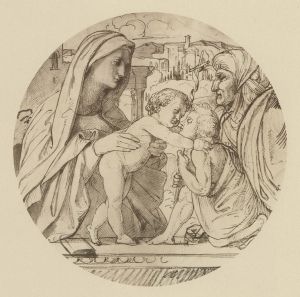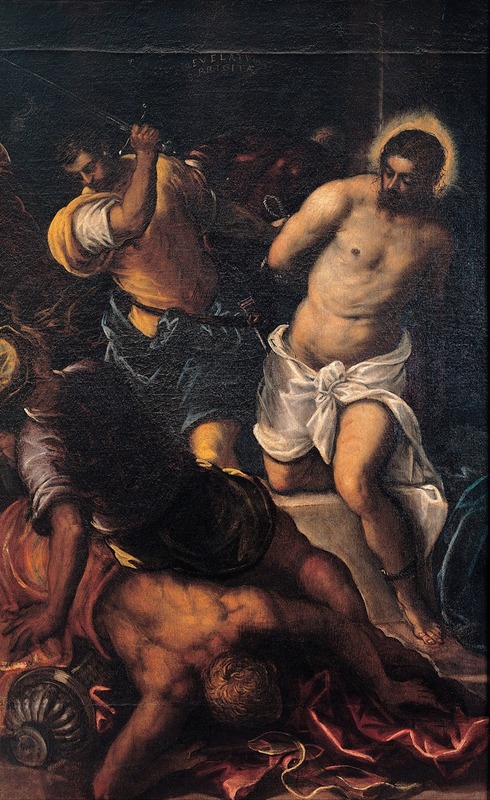
Crowning With Thorns
A hand-painted replica of Jacopo Tintoretto’s masterpiece Crowning With Thorns, meticulously crafted by professional artists to capture the true essence of the original. Each piece is created with museum-quality canvas and rare mineral pigments, carefully painted by experienced artists with delicate brushstrokes and rich, layered colors to perfectly recreate the texture of the original artwork. Unlike machine-printed reproductions, this hand-painted version brings the painting to life, infused with the artist’s emotions and skill in every stroke. Whether for personal collection or home decoration, it instantly elevates the artistic atmosphere of any space.
Jacopo Tintoretto's Crowning with Thorns is a painting attributed to the renowned Venetian artist of the late Renaissance period. Tintoretto, whose real name was Jacopo Robusti (1518–1594), was known for his dramatic use of light and shadow, dynamic compositions, and vigorous brushwork. He was a key figure in the Venetian school of painting and is often associated with the Mannerist style, which followed the High Renaissance.
The subject of Crowning with Thorns is a scene from the Passion of Christ, a common theme in Christian art. It depicts the moment when Jesus Christ is mocked by Roman soldiers, who place a crown of thorns on his head as a form of humiliation, symbolizing his claim to be the "King of the Jews." This episode is described in the Gospels of the New Testament, particularly in Matthew 27:29, Mark 15:17, and John 19:2-3. The scene is often portrayed to evoke the suffering and sacrifice of Christ, central themes in Christian theology.
Tintoretto's interpretation of this subject reflects his characteristic style, which often emphasized dramatic tension and emotional intensity. The composition likely features strong contrasts of light and shadow, a technique known as chiaroscuro, which Tintoretto used to heighten the emotional impact of his works. His figures are typically elongated and arranged in dynamic poses, conveying movement and energy. These stylistic elements align with the Mannerist tendency to prioritize emotion and drama over the balanced harmony of the High Renaissance.
While specific details about the creation date or commission of Crowning with Thorns are not widely documented, it is consistent with Tintoretto's broader body of work, which frequently explored religious themes. Tintoretto was deeply influenced by the spiritual and artistic climate of Venice during the 16th century, and many of his works were created for churches and religious institutions.
As with many of Tintoretto's paintings, Crowning with Thorns demonstrates his ability to merge the sacred and the human, capturing both the divine suffering of Christ and the raw, earthly cruelty of his tormentors. The painting is an example of Tintoretto's skill in conveying complex narratives through visual art, making him one of the most celebrated painters of his time.
Further details about the painting, such as its current location or provenance, are not readily available.





